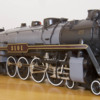I've taken long distance trains from Vancouver to Regina—back when it was Canadian Pacific, before CP and CN passenger trains were merged into VIA—but those trips were while trying to sleep in coach. In more recent years, I've taken a roomette from NYC to Spokane and back, to Kansas City and back, and last year, to the Bay Area and back. Retired, can afford the far higher cost than flying.
Attached is a photo of the interior of my roomette on one trip. I found that having ear plugs is a big plus. I slept comfortably. All my trips were during the summer. There's a feet first versus head first question which I've never fully explored.
On the Penn Station NYC to Chicago Union Station portion, there's a wash basin and toilet in the room. On the Zephyr and Empire Builder out of Chicago, the bathroom is down the hall. I understand that new roomettes will NOT have a toilet in them.
The photo shows the Lake Shore Limited roomette, with washcloth on the fold-out sink. The toilet is out of sight at bottom left. The bottom of the upper bunk—which I didn't use—is just visible at top.








